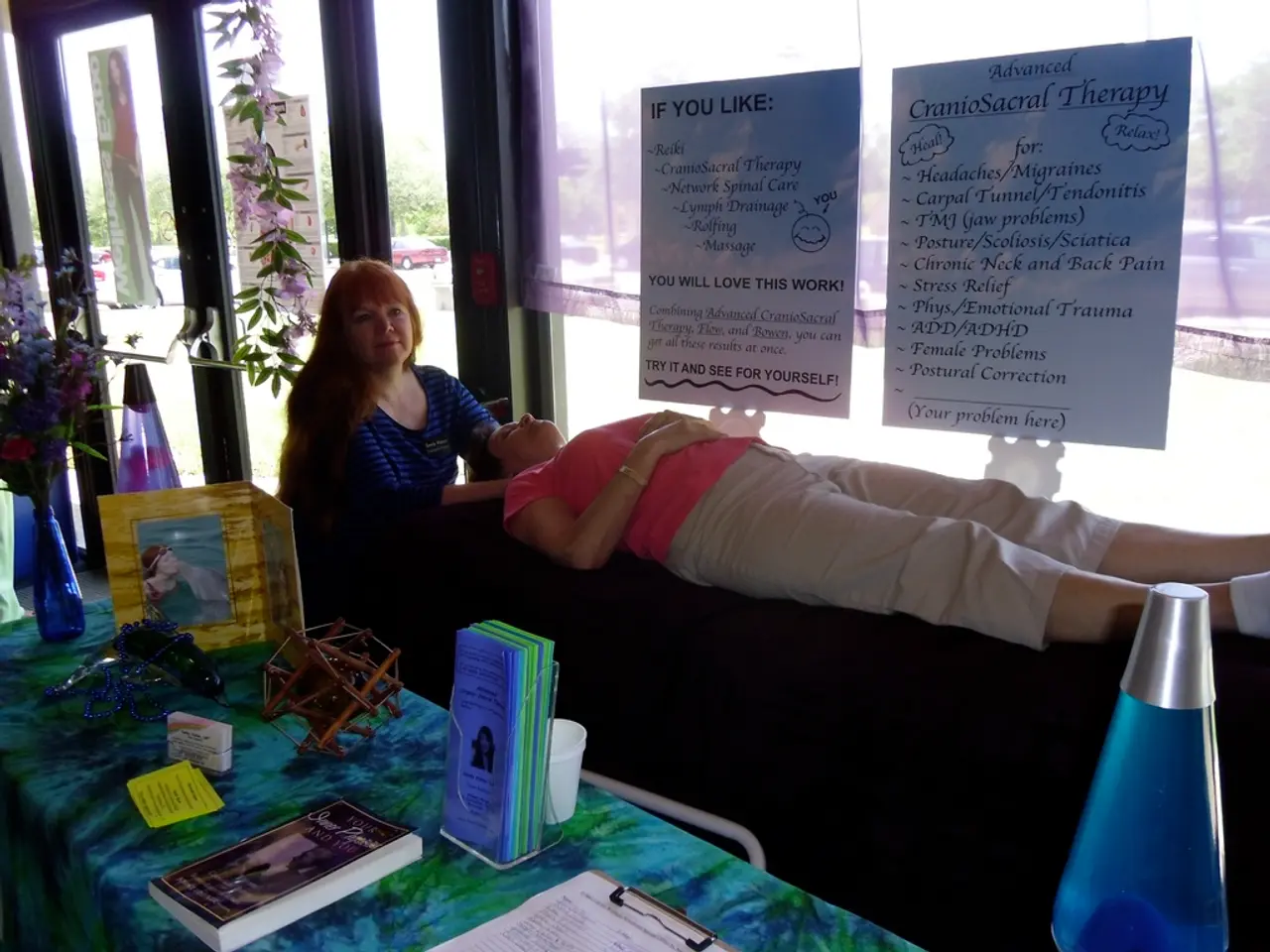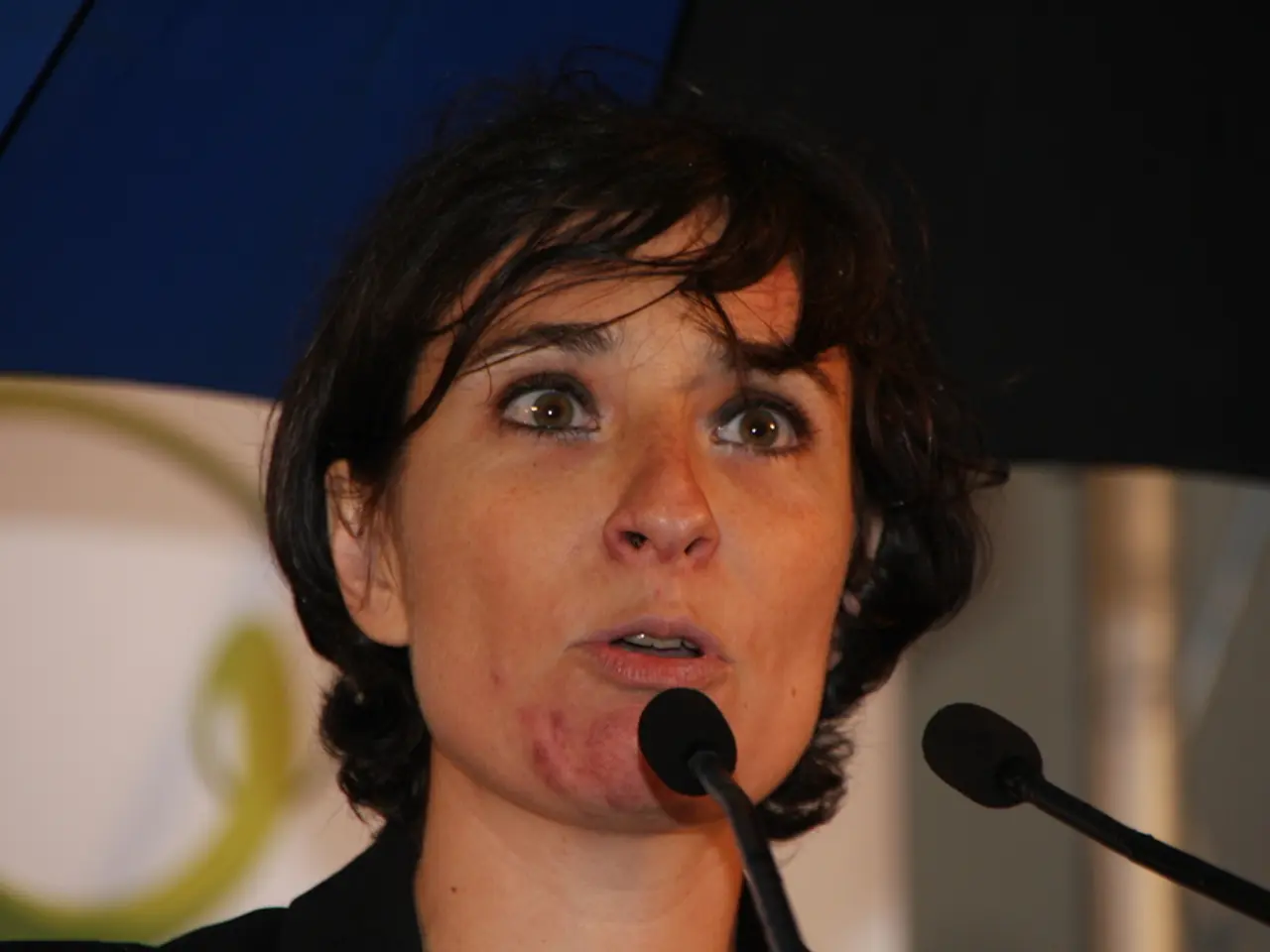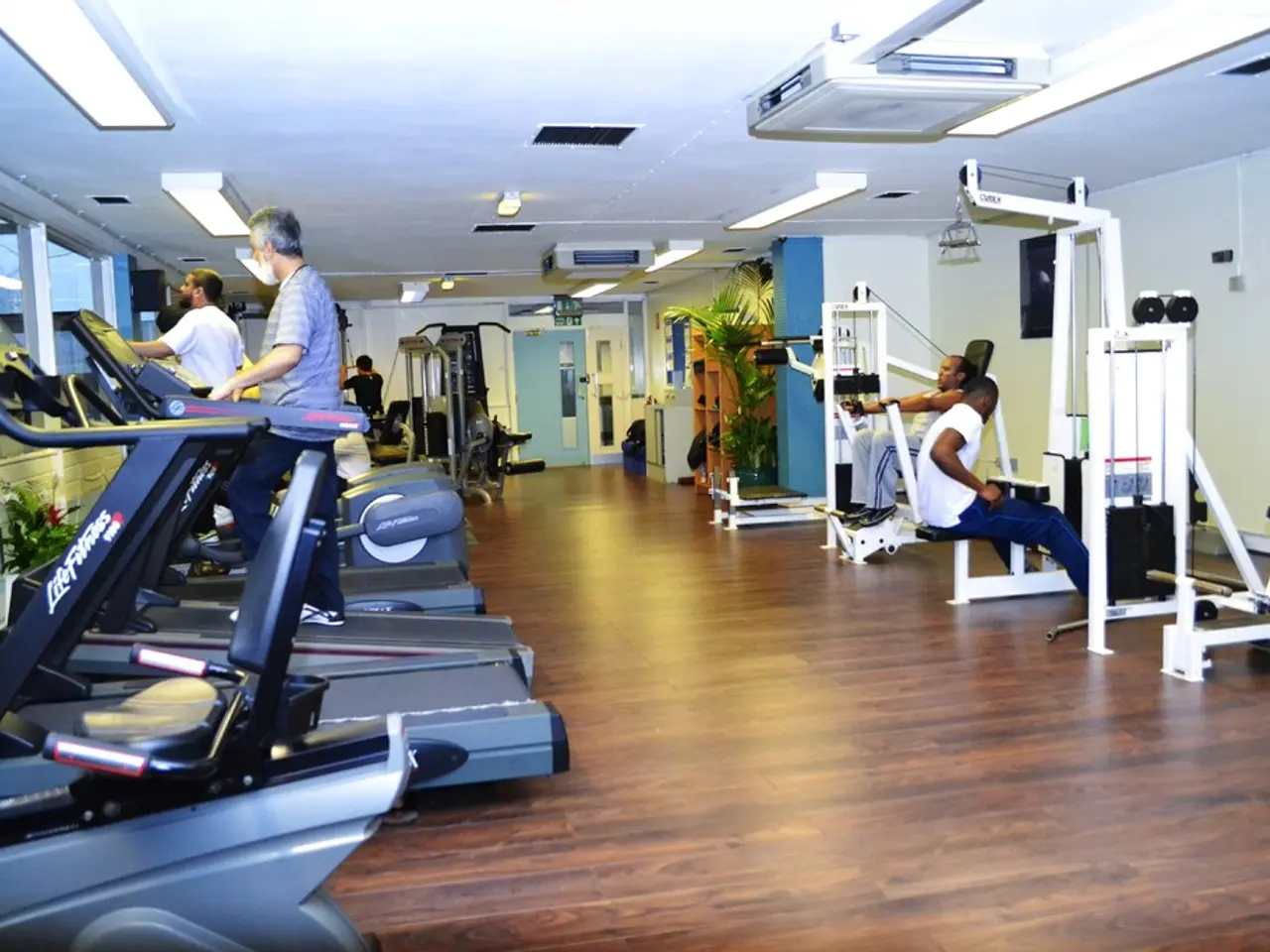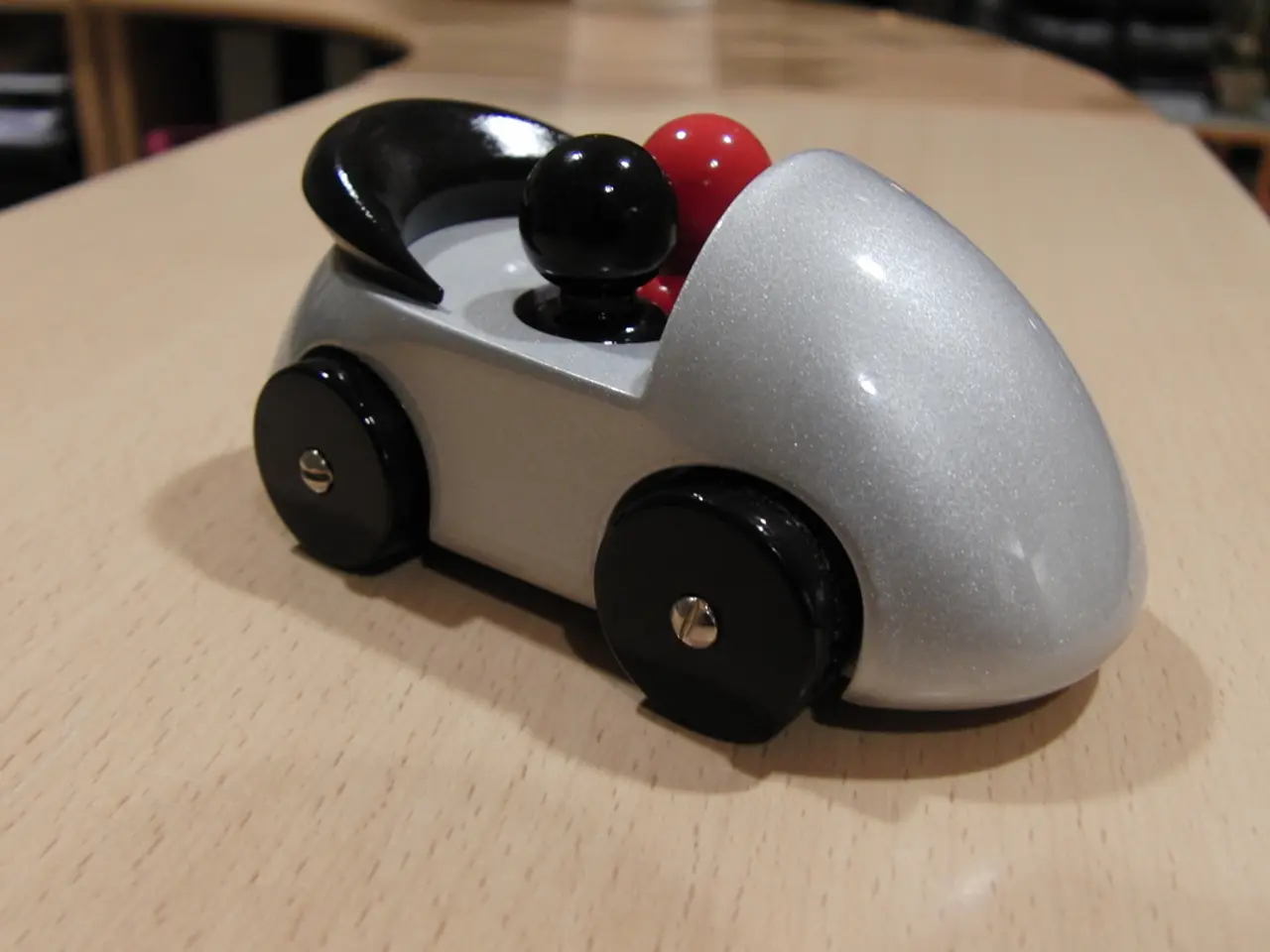Unusual Sleep Disorders: Insights on Parasomnia, Classifications, and Remedies
Waking up from a freaky dream that felt almost real? Experienced some wild sleep behavior or even sleepwalking? Chances are you've experienced parasomnia, a mysterious sleeping disorder that can spook you and your loved ones alike. Let's dive into the nitty-gritty of parasomnia - what it is, what causes it, and how to manage it.
What's Parasomnia?
Parasomnia is defined as an undesirable event that occurs during sleep, involving abnormal movements, behaviors, reactions, perceptions, or dreams. Typically, these events happen during REM (rapid eye movement) sleep or non-REM (non-rapid eye movement) sleep, but they can also occur while falling asleep, between sleep stages, or while transitioning from sleep to wakefulness.
What Causes It?
The exact cause of parasomnia is still under investigation, but common factors include:
- Sleep Deprivation: Not getting enough z’s can increase the likelihood of parasomnia.
- Genetics: Some people may be predisposed to parasomnia due to their genes.
- Neurological and Psychological Disorders: Conditions such as epilepsy, anxiety, depression, PTSD, and ADHD can affect sleep quality and increase the risk of parasomnia.
- Medications: Certain prescription meds may induce parasomnia as a side effect.
Types of Parasomnia
Sleep goes through four main stages throughout the night, separated into two categories: non-REM sleep and REM sleep.
Non-REM-related Parasomnias
Non-REM-related parasomnias involve physical or verbal activities that occur unconsciously. Here's a rundown of common non-REM sleep disorders:
- Sleepwalking (somnambulism): Getting up and wandering around while still asleep.
- Sleep Terrors (Night terrors): Intense fear that wakes you up during deep sleep, often accompanied by screaming, kicking, and thrashing.
- Sleep Talking (somniloquy): Talking while asleep, ranging from simple murmurs to full-blown conversations.
- Confusional Arousal: Disoriented behaviors upon waking from deep sleep, often involving confusion, unresponsiveness, and disorientation.
- Sleep-related Eating Disorder: Eating while asleep, with no recollection of the event the next day. It's not related to night eating syndrome.
REM-related Parasomnias
REM-related parasomnias occur during REM sleep when your eyes move rapidly under the eyelids, and there's an increased heart rate, breathing, and blood pressure. Here are the common traits associated with REM-related parasomnias:
- REM Sleep Behavior Disorder: Acting out or vocalizing your dreams during the REM sleep stage, potentially causing harm to yourself or others.
- Nightmare Disorder: Experiencing frequent nightmares that cause distress and disrupt sleep.
- Recurrent Isolated Sleep Paralysis (RISP): Multiple episodes of sleep paralysis without being caused by any other sleep disorders.
Other Types of Parasomnia
Parasomnias can occur at any time during the sleep cycle. These include:
Exploding Head Syndrome (EHS)
EHS is a non-harmful parasomnia in which you hear a sudden loud noise while asleep, causing abrupt awakenings, accompanied by flashes of light and feelings of distress. Stress, uncontrolled anxiety, and insomnia are thought to be potential triggers for EHS.
Sleep-Related Hallucinations
Sleep-related hallucinations involve vivid, realistic imagined events upon sleep onset, often confusing being awake or asleep. These hallucinations can affect multiple senses, including sight, sound, touch, taste, and smell. They can also be a sign of narcolepsy if they occur during the day.
Sleep Bruxism
Sleep bruxism, also known as teeth grinding, is the involuntary clenching of the jaw and grinding of teeth during sleep. Stress, anxiety, lifestyle factors, and medical or psychological conditions can cause sleep bruxism, which frequently co-occurs with obstructive sleep apnea (OSA) and snoring.
Diagnosis and Treatment
Parasomnias can be diagnosed based on a thorough clinical history, a sleep diary, a partner's account of the events, and assessing characteristics such as time, expression, and present behavior in the individual's home environment.
Treatment for parasomnia typically involves addressing underlying causes, making lifestyle changes, psychotherapy, and medical interventions. Common treatment options include Cognitive Behavioral Therapy (CBT), hypnotherapy, scheduled awakenings, medications, and medical devices, such as CPAP machines for sleep apnea.
Remember that it's essential to consult a healthcare provider before starting any new treatment for your parasomnia, and seeking professional guidance is crucial. You can also improve your sleep habits by practicing good sleep hygiene and following a consistent sleep schedule.
- Parasomnia, a sleeping disorder, can manifest as abnormal movements, behaviors, or reactions during sleep, occurring in either REM or non-REM sleep stages, or during transition periods from sleep to wakefulness.
- Common factors that contribute to parasomnia include sleep deprivation, genetics, neurological and psychological disorders, and certain medications.
- Non-REM sleep disorders, such as sleepwalking, sleep talking, sleep terrors, confusional arousal, and sleep-related eating disorder, involve physical or verbal activities that occur unconsciously.
- REM-related parasomnias, like REM sleep behavior disorder, nightmare disorder, and recurrent isolated sleep paralysis (RISP), occur during REM sleep and may involve acting out dreams, frequent nightmares, or multiple episodes of sleep paralysis without other sleep disorders being present.
- Additional parasomnias like exploding head syndrome, sleep-related hallucinations, and sleep bruxism (involuntary teeth grinding) can occur at any time during the sleep cycle.
- Diagnosis and treatment of parasomnia often involve addressing underlying causes, making lifestyle changes, psychotherapy, medical interventions, and consulting healthcare providers for guidance on suitable treatment options, such as Cognitive Behavioral Therapy (CBT), scheduled awakenings, medications, and medical devices like CPAP machines for sleep apnea. Practicing good sleep hygiene and maintaining a consistent sleep schedule can also help manage parasomnia.








